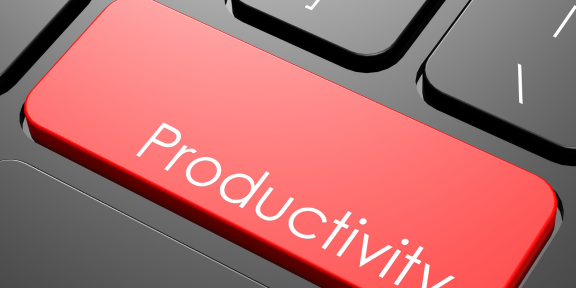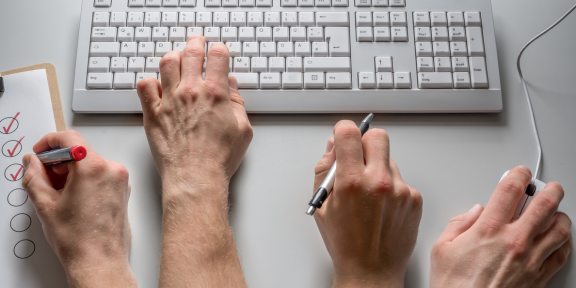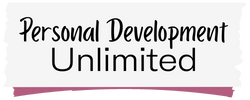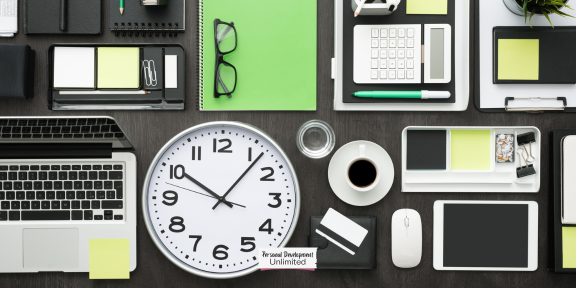Do you often feel like you’re not making the most of your day? Are you struggling to stay on top of your workload? You’re not alone. The average employee is only productive for 2 hours and 53 minutes per day.
In today’s fast-paced world, productivity is more important than ever. But fear not, there are simple yet effective techniques that can help you boost your productivity, make the most of your time and enhance your personal growth.
Here are some essential productivity tips to help you stay focused, organized, and on track:
Table of Contents
Time Management Techniques for Maximum Productivity
Are you struggling to juggle all your tasks and responsibilities? Do you often find yourself running out of time to complete your work? It’s time to take control of your schedule and learn some effective time management techniques that will boost your productivity and reduce your stress levels.
1. Set Your Priorities Straight
One of the first steps in effective time management is setting your priorities straight. Start by identifying your most important tasks and focus on completing them first. This will give you a sense of accomplishment and motivation to tackle the rest of your to-do list.
You can also use the Eisenhower Matrix, a tool that helps you categorize tasks based on their importance and urgency:
| Urgent | Not Urgent |
|---|---|
| Do First | Delegate |
| Do Later | Eliminate |
2. Plan Your Day
Planning your day in advance is another key aspect of effective time management. Take a few minutes each morning to create a to-do list and schedule your tasks based on their priority and estimated time to complete.
You can also try using the Pomodoro Technique, a time-management method that breaks work into 25-minute intervals, separated by short breaks. This technique can help you stay focused and improve your productivity.
3. Eliminate Distractions
Distractions can be a major productivity killer. To avoid them, try working in a quiet environment or use noise-cancelling headphones. You can also limit your screen time and disable notifications on your phone or computer.
If you need to use social media or other distracting websites, try using website blockers such as Freedom or StayFocusd, which limit your access to these sites during specific hours of the day.
By implementing these time management techniques, you can take control of your schedule and maximize your productivity. Remember to stay focused, set your priorities straight, plan your day, and eliminate distractions to achieve your goals and reach your full potential.

Efficient Work Habits to Boost Productivity
Getting more done in less time is the ultimate goal of productivity. It is essential to establish and maintain efficient work habits that will help you achieve better results, both in your personal and professional life.
Start Your Day with a Plan
The most productive people have a structured routine in place. Start each day by planning your tasks and prioritizing them according to their importance. Having a clear schedule will help you stay on track and give you the motivation to keep going.
One way to start your day is by jotting down your to-do list. This list should include your most important tasks, deadlines, and appointments. Organize your list in order of priority, so that you can focus on the most pressing items first.
Eliminate Distractions
Distractions are one of the biggest obstacles to productivity. To eliminate them, turn off your phone notifications, close your email, and avoid social media. These distractions can consume precious time and derail your progress.
Another way to get rid of distractions is to create a designated workspace. Find a quiet area where you can focus on your work without any disruptions. This workspace should be free from any potential distractions, such as noise, clutter, or anything that could steal your attention away from your work.
Take Regular Breaks
Working for long hours without taking a break can lead to burnout and decreased productivity. It is essential to rest your mind and body regularly to maintain peak performance.
One of the best ways to take a break during work is to practice the Pomodoro technique. This technique involves working for 25 minutes and taking a five-minute break. After four Pomodoro sessions, take a longer break of 15-20 minutes.
Stay Organized
Organization is a key component of productivity. Keep your workspace clean and tidy, and file your documents and notes in a specific place. This will help you find what you need quickly, reducing the time you spend searching for important items.
Moreover, using technology can help you stay organized. Keep an electronic calendar to keep track of your appointments, and use productivity apps to manage your tasks effectively.
By incorporating these efficient work habits into your routine, you will be able to boost your productivity, accomplish more, and achieve your goals in less time.

Goal Setting Strategies for Productivity
Setting clear and achievable goals is essential for staying motivated and focused. Here are three goal-setting strategies to help you increase your productivity:
1. Use the SMART method
The SMART method is a goal-setting technique that stands for Specific, Measurable, Achievable, Relevant, and Time-bound. By setting goals that meet these criteria, you increase your chances of success and avoid feeling overwhelmed. For example, instead of setting a goal to “write a book,” try setting a SMART goal to “write 500 words a day for the next 60 days.”
2. Break large goals into smaller ones
Breaking down larger goals into smaller pieces can make them feel more manageable and less daunting. Create a plan of action for achieving your goal and break it down into smaller tasks. For example, if your goal is to finish a project at work, break it down into smaller tasks like “research for two hours,” “write for one hour,” and “review and edit for 30 minutes.”
3. Visualize success
Visualization is a powerful tool for achieving your goals. Close your eyes and imagine what it will feel like to complete your goal and achieve success. Visualize the steps you will need to take to get there, and the positive outcomes that will result from your hard work. This will help keep you motivated and focused on your goal.

Prioritization Methods to Maximize Efficiency
Do you ever feel like you have too much to do and not enough time to do it all? Prioritization is key to achieving productivity. Here are some methods to consider:
The Eisenhower Matrix
This method helps you differentiate between urgent and important tasks, allowing you to prioritize your work more effectively. Create a 2×2 grid and label the quadrants “Urgent and Important,” “Not Urgent but Important,” “Urgent but Not Important,” and “Not Urgent and Not Important.” Assign your tasks to one of these quadrants and prioritize accordingly.
The ABCDE Method
With this method, you assign a letter to each task: A for tasks that are critical, B for tasks that are important, C for tasks that would be nice to do but aren’t essential, D for tasks you can delegate, and E for tasks you can eliminate. Focus on completing your A tasks first, then move on to B, C, and so on.
Remember, the goal isn’t to finish everything on your to-do list; it’s to complete the tasks that matter most.
Organization Skills for Improved Productivity
One of the most crucial skills you can develop to boost your productivity is organization. Being organized means having a clear overview of your tasks, deadlines, and priorities, which helps you work more efficiently and saves you valuable time. Here are some organization tips to help you get started:
| Tip | Description |
|---|---|
| Use a planner or calendar | Write down all your tasks, appointments, and deadlines in a physical or digital planner to keep track of your schedule and avoid forgetting important events. |
| Clean Your Workspace | A clean workspace reduces distractions and helps you focus on your tasks. Make it a habit to declutter and organize your desk every day before you start working. |
| Sort Your Emails | Set up folders in your email account to categorize and prioritize your messages. This way, you can quickly find important emails and avoid wasting time on irrelevant ones. |
By implementing these organization techniques, you can streamline your workflow and become more productive in your work.

Effective Task Management Techniques
Do you find yourself struggling to keep track of your tasks throughout the day? Do you often feel overwhelmed by the sheer amount of work you have to do? Effective task management can help you stay on top of your workload and achieve your goals efficiently. Here are some techniques to help you manage your tasks effectively:
| Technique | Description |
|---|---|
| Prioritization | Rank your tasks by importance and tackle them in order. This will ensure that you focus on the most important tasks first. |
| Time blocking | Allocate specific time slots for each task and stick to your schedule. This helps you avoid getting sidetracked and makes better use of your time. |
| Batching | Group similar tasks together and tackle them at the same time. This approach helps you stay focused and saves time by reducing the number of transitions between tasks. |
By implementing these task management techniques, you can increase your productivity, focus on what’s important, and achieve your goals efficiently. Remember to be consistent and disciplined in your approach, and watch your productivity soar!

Procrastination Solutions for Increased Productivity
Procrastination is a common issue that affects everyone at some point in their lives. It can be a significant roadblock to productivity, causing unnecessary stress and wasted time. Below are some solutions to help overcome procrastination and increase productivity:
1. Break Down Tasks
One of the main reasons for procrastination is feeling overwhelmed by a task. Breaking down larger tasks into smaller, more manageable pieces can make them less daunting and easier to tackle. Start with the easiest or most urgent part of the task, and work your way through the rest gradually.
2. Set Specific Goals
Setting specific, measurable, and achievable goals can help increase motivation and reduce procrastination. Write down a list of tasks, prioritize them, and set a deadline for each one. This way, you will have a clear idea of what needs to be done and when it needs to be completed.
3. Eliminate Distractions
Distractions are a major cause of procrastination. Identify the things that distract you the most, such as social media or a noisy environment, and eliminate them. Turn off your phone, close unnecessary tabs on your computer, and find a quiet place to work.
4. Use the Pomodoro Technique
The Pomodoro Technique is a time management method that involves breaking down work into intervals, usually 25 minutes, separated by short breaks. This technique can help overcome procrastination by breaking up work into manageable chunks and increasing focus and productivity.
5. Prioritize Tasks
Prioritizing tasks can help you focus on what is most important and avoid putting off essential tasks. Start with the most important or urgent tasks and work your way down the list. This way, you will ensure that you are making progress and staying on track.
Procrastination can be a significant barrier to productivity, but by breaking down tasks, setting specific goals, eliminating distractions, using the Pomodoro Technique, and prioritizing tasks, you can overcome it and increase your productivity.

Focus and Concentration Techniques for Enhanced Productivity
Do you find it difficult to stay focused on a task for long periods of time? Are you easily distracted by external factors or internal thoughts? Don’t worry, you’re not alone. Many people struggle with maintaining focus and concentration, but there are techniques you can use to improve your productivity.
Technique 1: Pomodoro Method
The Pomodoro Technique is a time management method that involves breaking work into short, timed intervals (usually 25 minutes) separated by short breaks. This technique can help you stay focused on a specific task for a set amount of time, increasing your productivity and reducing distractions.
| Steps | Benefits |
|---|---|
| Set a timer for 25 minutes | Reduces the feeling of overwhelm and procrastination |
| Work on a specific task for the entire 25 minutes | Helps you focus on one task at a time |
| Take a short break (5-10 minutes) | Allows for mental rest and rejuvenation |
| Repeat the process for a set number of intervals | Helps you work more efficiently and productively |
Technique 2: Mindfulness Meditation
Mindfulness meditation involves focusing your attention on the present moment, allowing you to cultivate a sense of calm and clarity. This technique can help improve your focus and concentration, reducing stress and improving overall wellbeing.
- Find a quiet, comfortable place to sit
- Set a timer for 5-10 minutes
- Close your eyes and focus on your breathing
- When your mind starts to wander, gently redirect your attention back to your breath
- Repeat this process for the duration of the session
Technique 3: Single Tasking
Single tasking involves focusing on one task at a time, rather than multitasking. This method can help you improve your focus and concentration on a specific task, leading to greater productivity and better quality work.
“The ability to concentrate and to use your time well is everything if you want to succeed in business–or almost anywhere else for that matter.” – Lee Iacocca
By utilizing these focus and concentration techniques, you can improve your productivity and achieve your goals more efficiently. Remember, every moment spent being productive is a step closer to achieving your dreams and aspirations.

Work-Life Balance Strategies for Sustainable Productivity
It’s easy to get caught up in work and lose sight of the other important areas of your life. Striking a balance between work and personal life is crucial for maintaining sustainable productivity. Here are some strategies to help you do just that:
1. Set boundaries: You need to establish a clear separation between your work and personal life. This means setting work hours and sticking to them. Don’t let work creep into your personal time, and vice versa.
2. Prioritize self-care: Make sure to take care of yourself physically, mentally, and emotionally. This includes getting enough sleep, exercising regularly, and taking breaks to recharge your batteries.
3. Learn to say no: Don’t overload yourself with too many commitments – say no to things that don’t align with your priorities. Prioritizing your time will help you focus on what matters most.
4. Schedule personal time: Just as you schedule work tasks, schedule time for personal activities. This could be anything from spending time with family and friends to pursuing hobbies or taking a vacation.
5. Unplug: When you’re not working, disconnect from technology as much as possible. Turn off notifications and resist the urge to check your email or social media constantly. This will help you be more present in your personal life.
By implementing these strategies, you can achieve a better work-life balance and improve your overall productivity in the long run.
FAQ
Here are some answers to frequently asked questions about productivity tips:
1. Are productivity tips only useful for professionals?
No, productivity tips can be useful for anyone looking to improve their efficiency in their personal or professional life.
2. Can productivity tips really change my life?
Yes, implementing productivity tips and techniques can have a significant impact on the way you manage your time and approach tasks. By consistently applying these tips and techniques, you can improve your productivity and achieve your goals more effectively.
3. How many productivity tips should I implement at once?
It’s best to start with a few productivity tips that you feel comfortable incorporating into your routine and gradually add more as you become more comfortable with your productivity level.
4. Should I only focus on one area, such as time management or organization, or try to improve in multiple areas at once?
It’s important to prioritize areas that you feel are most impactful to your productivity and focus on those first. However, it’s also beneficial to work on improving in multiple areas simultaneously.
5. How long does it take to see results from implementing productivity tips?
The time it takes to see results can vary depending on the tips you’re implementing and how consistent you are in applying them. Some tips may have an immediate impact, while others may take longer to show results. It’s important to be patient and stay committed to your productivity goals.
6. What should I do if I struggle to implement productivity tips?
It’s common to encounter challenges when trying to make changes to your routine, but it’s important to stay persistent. Try breaking down the tips into smaller, more manageable tasks, and consider seeking support from a coach, mentor, or accountability partner.
7. Can I create my own productivity tips?
Absolutely! Everyone’s productivity needs and preferences are unique, so it’s important to experiment with different techniques and find what works best for you. Don’t be afraid to try new things and create your own productivity tips.
Potential Questions about Productivity Tips
Here are some answers to frequently asked questions about productivity tips:
1. Are productivity tips only useful for professionals?
No, productivity tips can be useful for anyone looking to improve their efficiency in their personal or professional life.
2. Can productivity tips really change my life?
Yes, implementing productivity tips and techniques can have a significant impact on the way you manage your time and approach tasks. By consistently applying these tips and techniques, you can improve your productivity and achieve your goals more effectively.
3. How many productivity tips should I implement at once?
It’s best to start with a few productivity tips that you feel comfortable incorporating into your routine and gradually add more as you become more comfortable with your productivity level.
4. Should I only focus on one area, such as time management or organization, or try to improve in multiple areas at once?
It’s important to prioritize areas that you feel are most impactful to your productivity and focus on those first. However, it’s also beneficial to work on improving in multiple areas simultaneously.
5. How long does it take to see results from implementing productivity tips?
The time it takes to see results can vary depending on the tips you’re implementing and how consistent you are in applying them. Some tips may have an immediate impact, while others may take longer to show results. It’s important to be patient and stay committed to your productivity goals.
6. What should I do if I struggle to implement productivity tips?
It’s common to encounter challenges when trying to make changes to your routine, but it’s important to stay persistent. Try breaking down the tips into smaller, more manageable tasks, and consider seeking support from a coach, mentor, or accountability partner.
7. Can I create my own productivity tips?
Absolutely! Everyone’s productivity needs and preferences are unique, so it’s important to experiment with different techniques and find what works best for you. Don’t be afraid to try new things and create your own productivity tips.
Personal Development Unlimited is your go-to place to be You, Without Limits. We bring together personal development and self-improvement articles, books, courses and videos in one place. Find your self-growth opportunities easily.
Comments
0 comments



